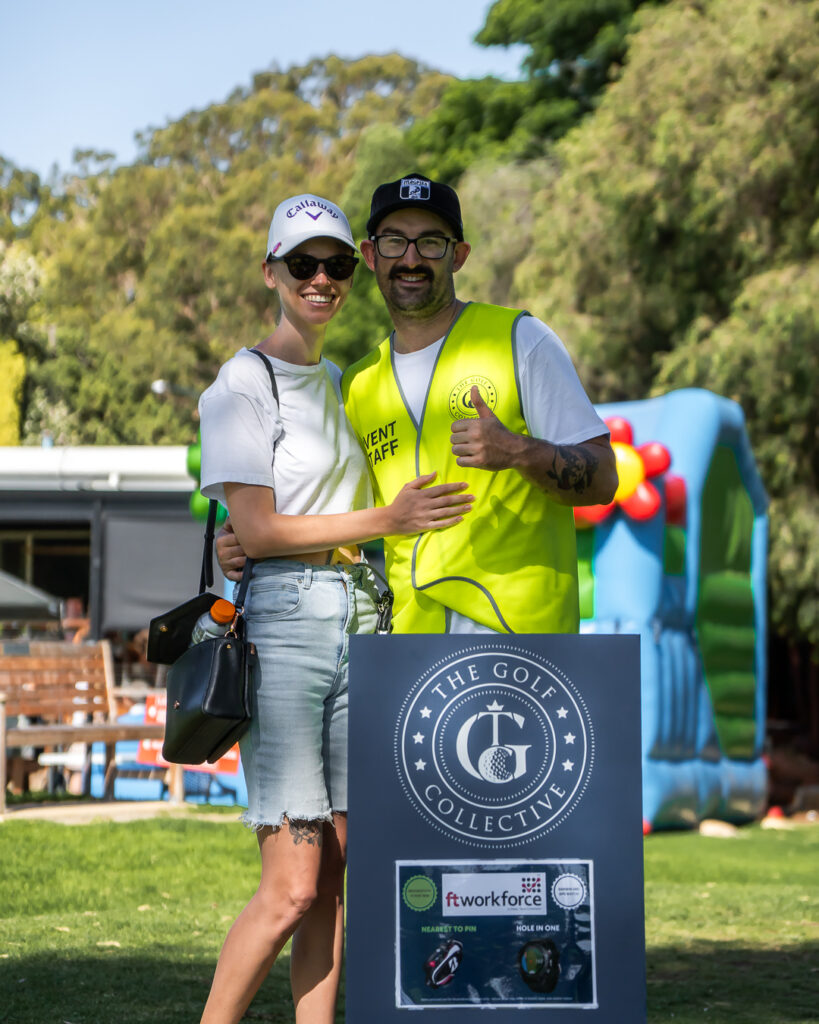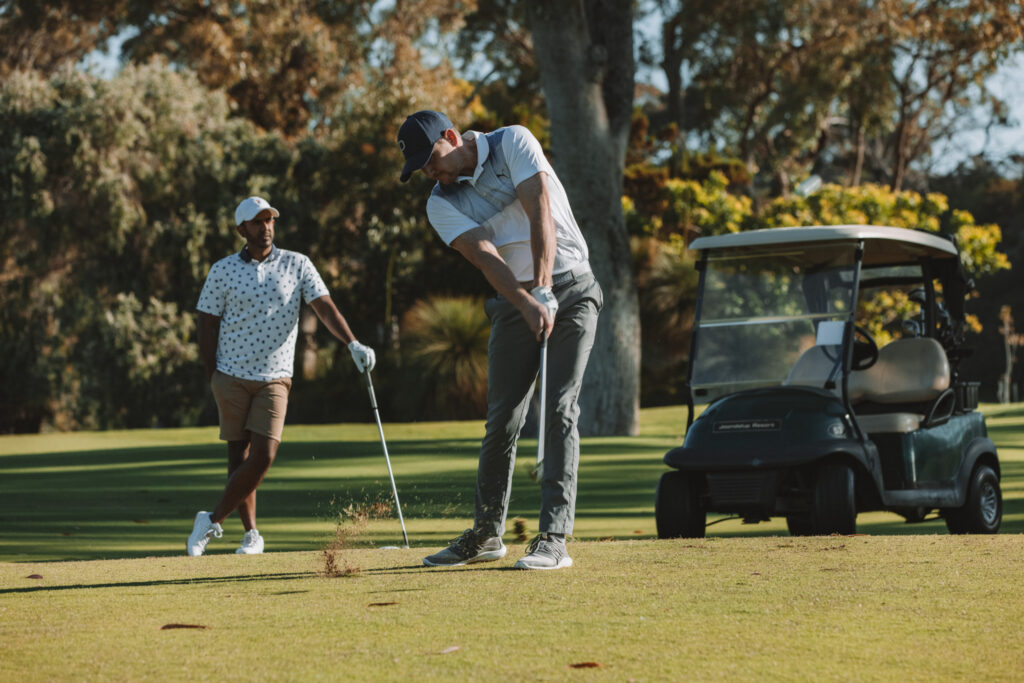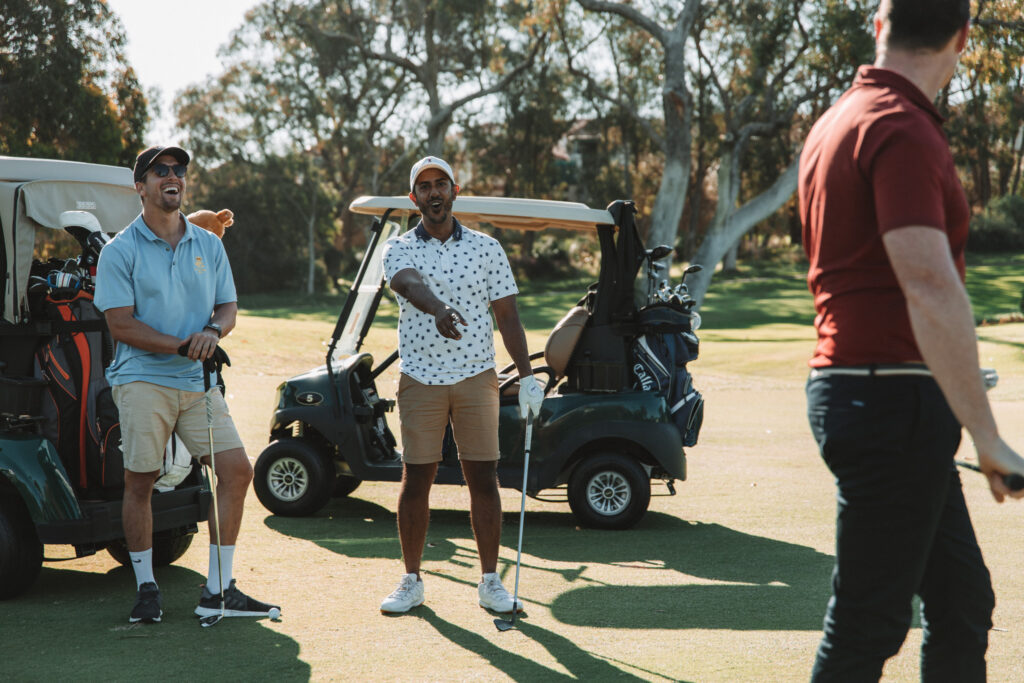Getting a Lesson for the First Time: Why Most People Don’t Go Back
For beginners taking your first lesson can feel intimidating. The thought of embarrassing yourself, learning challenges, or even the fear of worsening your game often keeps you from taking that first step. However, understanding what to expect and why these fears are common can help ease the anxiety and make the experience rewarding.
In this article, we’ll explore why some golfers hesitate to continue after their first golf lesson and how to approach your initial lesson with confidence.

Why Do Golfers Avoid Lessons?
1. Fear of Embarrassment
Golf can feel intimidating, especially for beginners worried about making mistakes in front of an instructor. Common fears include:
- Mis-hitting the ball repeatedly.
- Not understanding the instructor’s tips right away.
- Comparing themselves to others who are more skilled.
It’s important to remember that instructors are there to help, not judge. Their role is to guide you through challenges and help you improve step by step.
2. Unrealistic Expectations
Some golfers want results right from the start of their lesson. When their swing doesn’t magically transform, they feel discouraged and may avoid returning. Real improvement take time, and the first lesson is just the beginning of a process.
3. Fear of Game Regression
A common concern is that incorporating new techniques from a lesson may initially disrupt their game. This fear is understandable—adjusting to a new grip or stance can feel awkward at first. However, sometimes you need to go slightly backwards before you can go forward, this is normal and part of long-term improvement.
4. Cost and Time Commitments
Lessons require an investment of both time and money, and some players worry about whether the value will justify the cost. Having the right coach can make this easier as you will see value in what they are teaching you. Understanding the benefits of structured guidance can help alleviate these concerns.

How to Overcome These Fears
1. Start with a Positive Mindset
Approach your first lesson with curiosity rather than fear, Don’t be afraid to ask questions. Recognize that improvement is a journey, and even small steps forward are valuable.
2. Communicate with Your Instructor
Before your lesson begins, share your goals, concerns, and current skill level with your instructor. A good coach will tailor the lesson to your needs and help you feel at ease.
3. Focus on Fundamentals
Your first lesson will likely start with the basics like grip, stance, and posture. Starting with these foundations will set you up for long-term success. Be patient as you get used to these simple factors.
4. Set Realistic Goals
Instead of expecting drastic changes in one session, focus on small goals like improving contact or understanding swing mechanics. Small, consistent progress builds confidence and keeps you motivated.

What to Expect in Your First Golf Lesson
Understanding what typically happens during a first lesson can help ease anxiety:
- Warm-Up and Assessment
Your instructor will observe your current swing to identify areas for improvement. Don’t worry about perfection—this is just a starting point. - Introduction to Basics
You’ll likely focus on foundational techniques, such as grip, alignment, and posture. While it may feel repetitive, these basics are essential for long-term progress. - Drills and Practice
Your instructor may introduce drills to help reinforce the techniques you’re learning. These exercises are designed to target specific areas of improvement. - Feedback and Encouragement
Constructive feedback is key to a successful lesson. A good coach will provide positive reinforcement alongside tips for improvement.
Why You Should Stick with Lessons
1. Personalized Guidance
Unlike practicing on your own, lessons provide expert feedback tailored to your game. Instructors can identify subtle issues that might go unnoticed and offer solutions to these issues.
2. Faster Improvement
While self-teaching can lead to frustration, working with a professional makes your progress go faster. Lessons focus on what matters most, saving you time and effort.
3. Building Confidence
Each session builds on the last, helping you gain confidence in your skills. The structured environment of lessons builds a sense of achievement.
Tips for Making the Most of Your Lessons
- Be Open to Change: Improvement often requires breaking old habits and embracing new techniques. I often say – “If it feels wrong, you are probably doing it right”, especially if a change is needed.
- Practice Between Lessons: Consistent practice reinforces what you’ve learned and helps solidify new skills.
- Stay Patient: Progress may feel slow initially, but persistence pays off.
Final Thoughts
Taking your first golf lesson can be a great experience. While fears about embarrassment or regression are common, they shouldn’t hold you back from seeking guidance. By approaching lessons with an open mind, setting realistic expectations, and embracing the process, you can unlock your potential and take your game to new heights.
Make sure you do your research on the coach you want to see, getting lessons from a coach that you get along with and can communicate with will go a long way.
Remember, even the best players started as beginners. The journey to improvement begins with that first step.















